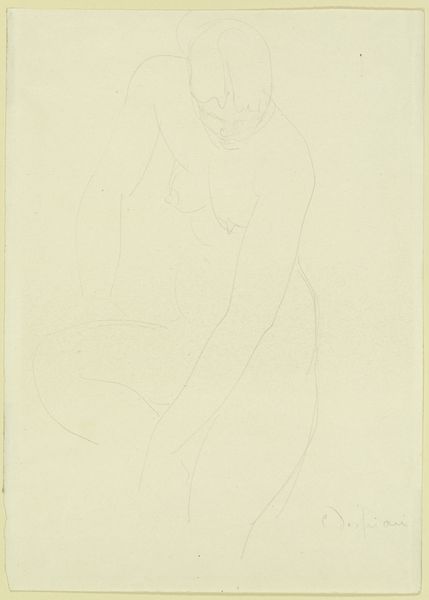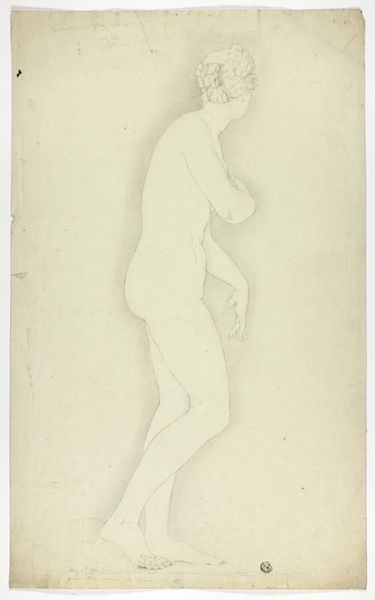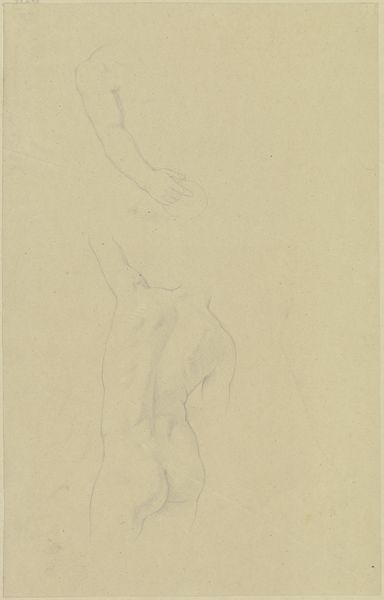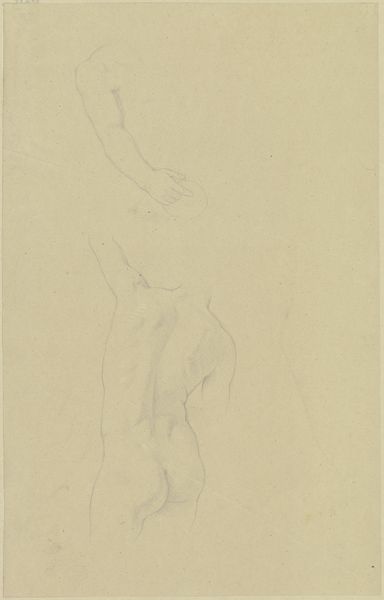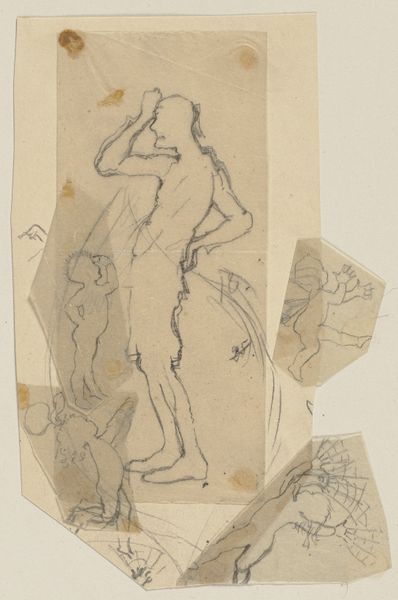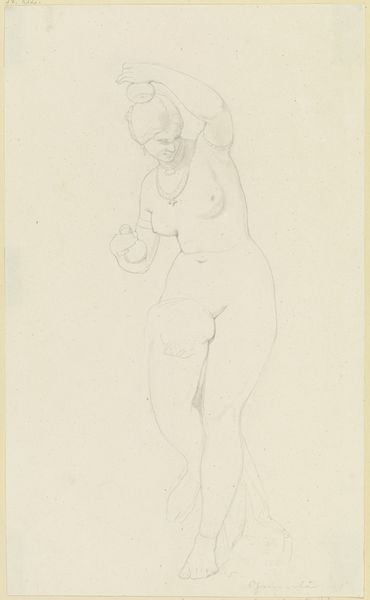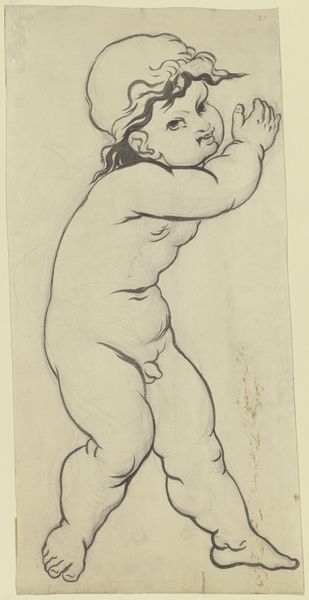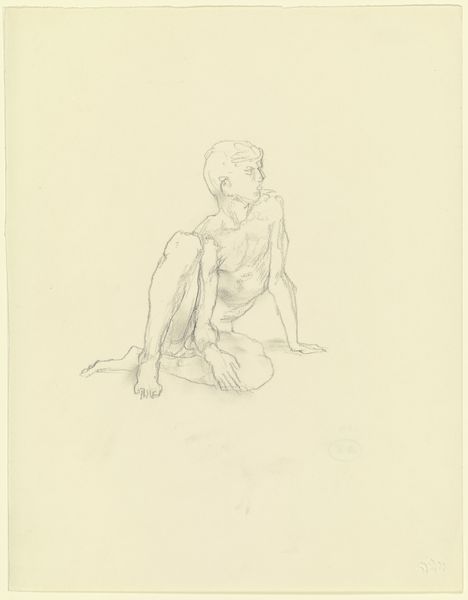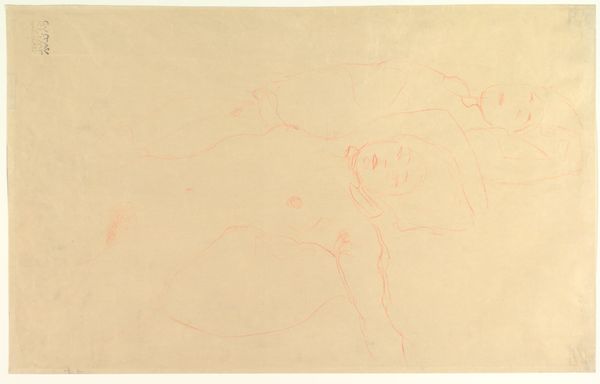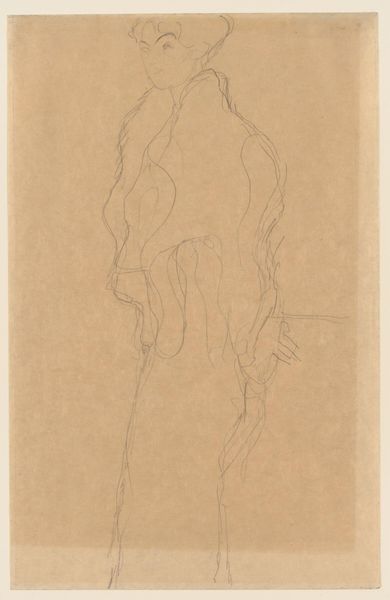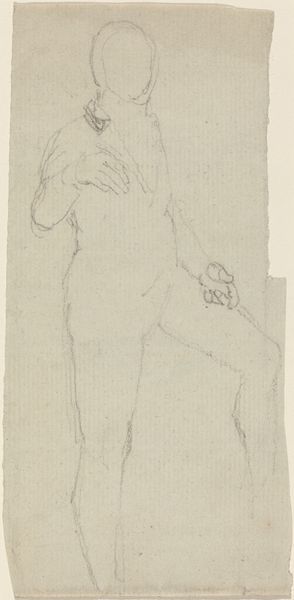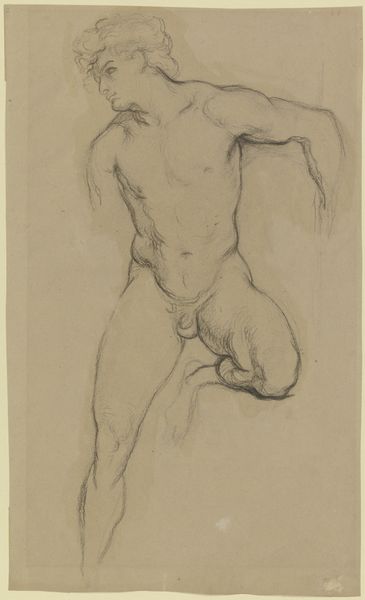
drawing, paper, pencil
#
portrait
#
drawing
#
figuration
#
paper
#
pencil
#
line
#
academic-art
#
nude
Copyright: Public Domain
Curator: Before us we have Hans Thoma’s sketch entitled “Cherub,” residing here at the Städel Museum, created with pencil on paper. What are your initial thoughts? Editor: There's a lightness to it, an ephemeral quality. The minimal use of line and the unfinished appearance make the subject seem almost dreamlike, poised between existence and non-existence. Is this rendering the traditional religious representation, or something altogether more symbolic? Curator: Perhaps both. Consider the paper itself—its texture and the way the pencil marks lie upon it. There’s an emphasis here on the materiality of art-making. The visible erasures and corrections are very much the material act, aren't they? An academic exercise laid bare to scrutiny! It demonstrates a dedication to a specific means of production—one deeply rooted in classical techniques of rendering form and figure from observation. Editor: It’s interesting you mention the classical. For me, this image pulls from a deep well of associations related to cherubs, childhood, and innocence – concepts deeply entrenched in Western art. Cherubs were once potent symbols of divine love and heavenly hosts, often appearing in religious paintings and sculptures as attendants to the Madonna or as musical participants in scenes of heavenly rejoicing. Yet, it's clear that the symbolic is undergoing a transformation. Curator: Indeed, and transformations require a skilled workforce, correct? And what labor practices! Note the artist’s emphasis on anatomical accuracy, showcasing academic training; what is often dismissed as formula is itself deeply tied to workshop practices where observation is a learned method, honed through practice, to yield such a sense of realism. What this also suggests is art as a product. In some ways, this very sketch illustrates a commodity from concept to manufacturing. Editor: Precisely. And, reflecting again on that iconographic role, doesn't this cherub offer us today the very idea of something pure, unsullied by the harsh realities of the world? That image endures even when religious meaning may wane! We seem to continue projecting these meanings and associations even as their historical context recedes further into the past. Curator: A wonderful synthesis. Editor: It’s been an insightful investigation for me.
Comments
No comments
Be the first to comment and join the conversation on the ultimate creative platform.

